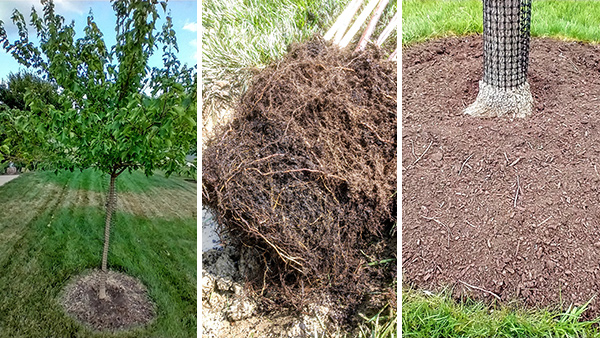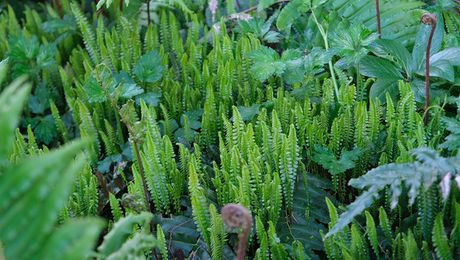
A tree is a big investment, so it is worth taking some time to find exactly the right tree for your garden. Before you begin shopping, it’s a good idea to research the cultural needs of any trees you are considering and think about how well these needs match up with the conditions at your planting site. Is the tree well-suited to your region’s climate? How well will it adapt to the soil and light conditions that are available in the spot where it will be planted?

Find the right planting site
Finding the right planting site for your new tree is also important. The spot you choose should be at least 3 feet away from pavement and fences, and at least 15 feet from buildings and other trees. Larger trees need even more space. Conduct a soil fertility test at the site and, if necessary, amend the soil as recommended before you plant.
Time to plant
Good timing helps too. Early spring or early fall are often excellent times for tree planting. If possible, schedule your shopping trip or delivery for a time when you can get the tree into the ground soon after it arrives on site.

Tree inspection
Closely inspect trees at the nursery or garden center before you buy, and then again when your tree is delivered. If you purchase a tree online, remove all packing material as soon as it arrives and take a close look. In general does the tree appear healthy? Has it been damaged in transit?

Here’s a checklist of qualities to look for in a new tree:
- A straight trunk with a single, upright, central leader (avoid trees with multiple leaders)
- A trunk that is free of wounds, scars, cracks, or rotten wood
- Branches that are well attached and well spaced (avoid plants with dead or damaged branches)
- Leaves that are well distributed and the proper size and color for the species (avoid plants with yellowing, browning, or dead leaves)
- An exposed root collar, also called a root flare, where the trunk base naturally widens and connects with the topmost main roots (avoid trees with buried root flares or roots that circle the pot or girdle the trunk)
If you’re looking for trees with great fall color, here are some of executive editor Danielle Sherry’s favorites.
To learn more about trees and their care, contact your local Cooperative Extension Service, and check the USDA Forest Service’s Tree Owner’s Manual.
—Thomas J. Mrazik is a horticulturist, a garden writer, and the owner of Goodly Gardens in Worcester, Pennsylvania.
Fine Gardening Recommended Products

The Crevice Garden: How to make the perfect home for plants from rocky places
Fine Gardening receives a commission for items purchased through links on this site, including Amazon Associates and other affiliate advertising programs.

DeWalt Variable-Speed Cordless Reciprocating Saw
Fine Gardening receives a commission for items purchased through links on this site, including Amazon Associates and other affiliate advertising programs.
- 18.31 x 6.13 x 4 inches
- 1-1/8-inch stroke length
- Variable speed trigger with 0-3000 spm


















Comments
Log in or create an account to post a comment.
Sign up Log in